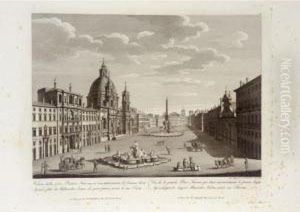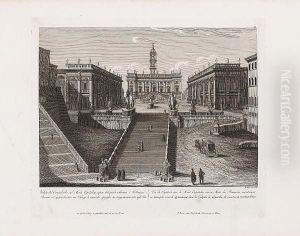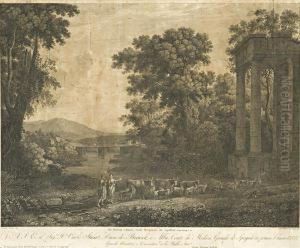Pietro Parboni Paintings
Pietro Parboni was an Italian painter and engraver born in Rome on April 18, 1796. He belonged to the artistic movement of Neoclassicism, which emerged in the mid-18th century and gained prominence in the early 19th century. This movement was characterized by a desire to return to the classical beauty and grandeur of Ancient Greek and Roman art and culture. Parboni's works often reflected these neoclassical ideals, emphasizing harmony, clarity, and strong linear designs.
As a young artist, Parboni received his training at the Accademia di San Luca in Rome, which was the city's premier institution for the arts. The academy was an essential breeding ground for artistic talent and provided Parboni with a solid foundation in the techniques and philosophies of art that were prevalent during his time. He studied under the guidance of prominent artists such as Vincenzo Camuccini, who was known for his historical and mythological paintings. Camuccini's influence is evident in Parboni's work, particularly in his attention to detail and his use of historical subjects.
Throughout his career, Pietro Parboni was engaged in both painting and engraving. His engravings, in particular, were highly regarded and contributed significantly to the dissemination of neoclassical aesthetics across Europe. Beyond his own creations, Parboni was also involved in the reproduction of works by other artists, which was a common practice at the time for sharing art with a wider audience.
Parboni's works include a variety of subjects, from historical scenes to portraits and landscapes. He was skilled at capturing the essence of his subjects with precision and grace, which made him well-respected among his contemporaries. His contributions to Italian art were recognized during his lifetime, and he enjoyed a certain degree of success.
Unfortunately, Pietro Parboni's life was cut short when he died on March 15, 1841, in Rome. Despite his relatively brief career, he left behind a body of work that continues to be appreciated for its adherence to the neoclassical style and its embodiment of the artistic values of his time. Parboni's legacy remains in the form of his paintings and engravings, which can be found in various collections and museums, and through his influence on subsequent generations of artists.


